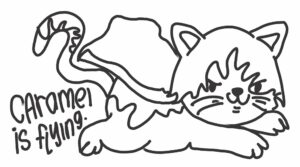After reading the paper, what I find most interesting is the methods used for computer vision and how simple they actually are. I always thought computer vision requires a significant amount of different complex algorithms, but it turns out to be as simple as comparing pixels one by one at different times. However, I still have no idea how arrays of pixels (how algorithms interpret images or videos) can be used to gain advanced information such as “tracking the orientation of a person’s gaze.”
I also find it interesting how these techniques can be applied to interactive media art. The way it makes artwork interactive is not making the viewer touch buttons whatsoever, but only move around and see what happens. This method of interactivity gives the viewer more freedom to explore what lies beyond the artwork, instead of just playing within the set of rules the artist sets. It also gives viewers an urge to explore the artwork more because they feel freedom when participating in the artwork. They would want to try out different ways of interaction and see what happens, and that’s what I find most interesting about computer vision used in interactive art pieces.



